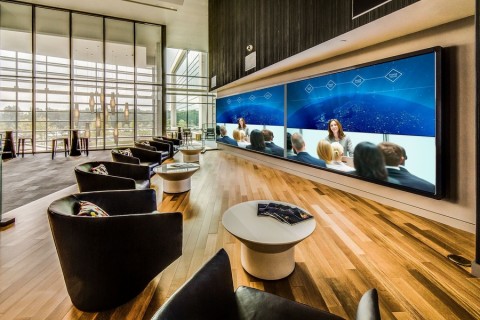Exploring the Evolution of Electronic Signage Technology and Its Influence on Installation Methods
Wiki Article
Digital display solutions has arrived a significant way since its inception. Initially, displays were fixed and needed manual modifications, which could be time-consuming and demanding. With the advancement of innovation, digital signage has developed into a dynamic and engaging medium. Currently, displays can show lively images, footage, and real-time information, making them more captivating for viewers. This transformation has not only changed how information is presented but has also transformed the way businesses and entities communicate with their audiences.

One of the key developments in digital signage technology is the utilization of high-definition screens. These screens offer improved resolution and color precision, which enhances the overall viewing encounter. Additionally, the advent of LED and liquid crystal display technology has made it possible to produce thinner and more lightweight screens. This has enabled for more flexible installation options, such as surface mounting, hanging, or even independent displays. As a result, companies can choose the most suitable configuration that fits their space and customer needs, making digital signage a flexible answer for various environments.
Another notable advancement is the integration of media management platforms (CMS). These platforms allow operators to quickly create, schedule, and oversee content across multiple displays from a unified platform. This capability is particularly beneficial for companies with multiple locations, as it about this ensures consistent messaging and identity. Furthermore, many CMS systems offer web-based solutions, enabling remote control and real-time updates. This means that companies can promptly react to changes in data or promotions, keeping their material current and pertinent.
The impact of digital signage technology on installation practices cannot be overlooked. With the rise of interactive displays and touchscreens, installation has become more complicated. Technicians must now take into account elements such as wiring, networking, and user engagement. Additionally, the requirement for appropriate mounting and positioning is essential to guarantee optimal sightlines and accessibility. As a result, professional installation solutions have become more essential, as they bring expertise in both technology and aesthetics to develop impactful digital signage solutions.
In conclusion, the evolution of digital signage technology has significantly influenced installation practices and the way data is communicated. With advancements in display systems, media management systems, and installation techniques, businesses can develop captivating and impactful displays that captures the attention of their audience. As digital signage continues to expand and develop, it will certainly play a crucial role in shaping the future of communication in various industries.